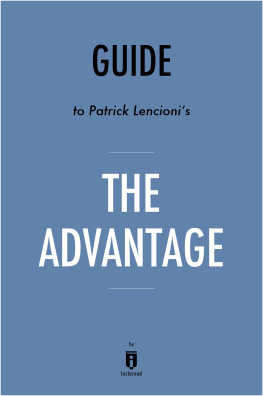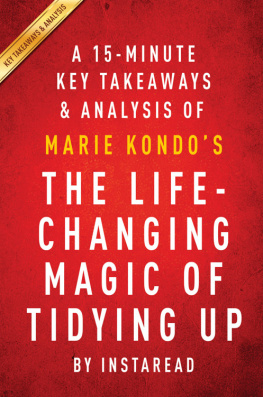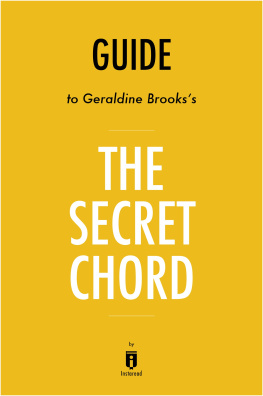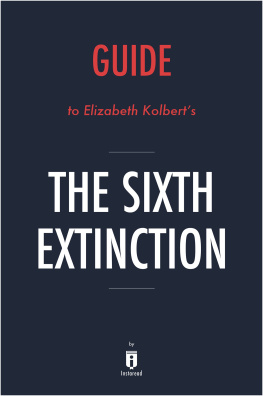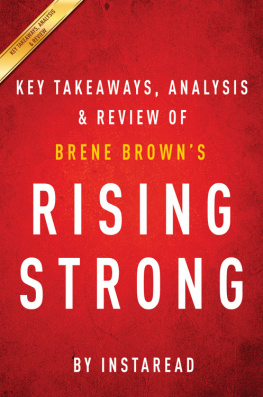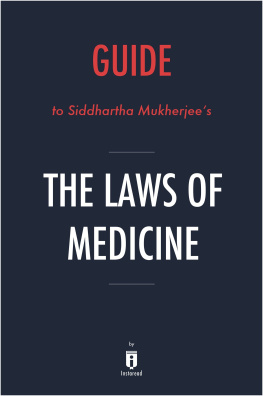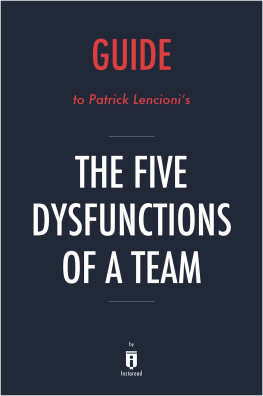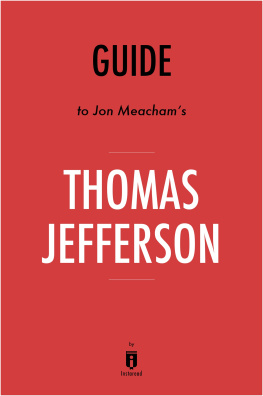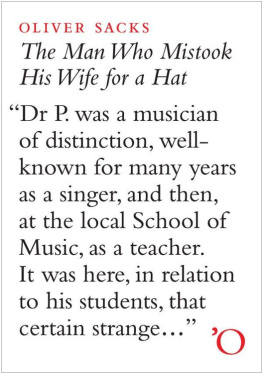Instaread - The Man Who Mistook His Wife for a Hat: by Oliver Sacks / Key Takeaways, Analysis & Review: And Other Clinical Tales
Here you can read online Instaread - The Man Who Mistook His Wife for a Hat: by Oliver Sacks / Key Takeaways, Analysis & Review: And Other Clinical Tales full text of the book (entire story) in english for free. Download pdf and epub, get meaning, cover and reviews about this ebook. year: 2015, publisher: iDreamBooks Inc, genre: Art. Description of the work, (preface) as well as reviews are available. Best literature library LitArk.com created for fans of good reading and offers a wide selection of genres:
Romance novel
Science fiction
Adventure
Detective
Science
History
Home and family
Prose
Art
Politics
Computer
Non-fiction
Religion
Business
Children
Humor
Choose a favorite category and find really read worthwhile books. Enjoy immersion in the world of imagination, feel the emotions of the characters or learn something new for yourself, make an fascinating discovery.
The Man Who Mistook His Wife for a Hat: by Oliver Sacks / Key Takeaways, Analysis & Review: And Other Clinical Tales: summary, description and annotation
We offer to read an annotation, description, summary or preface (depends on what the author of the book "The Man Who Mistook His Wife for a Hat: by Oliver Sacks / Key Takeaways, Analysis & Review: And Other Clinical Tales" wrote himself). If you haven't found the necessary information about the book — write in the comments, we will try to find it.
Inside this Instaread of The Man Who Mistook His Wife for a Hat:
- Important People
- Key Takeaways
- Analysis of Key Takeaways
The Man Who Mistook His Wife for a Hat: by Oliver Sacks / Key Takeaways, Analysis & Review: And Other Clinical Tales — read online for free the complete book (whole text) full work
Below is the text of the book, divided by pages. System saving the place of the last page read, allows you to conveniently read the book "The Man Who Mistook His Wife for a Hat: by Oliver Sacks / Key Takeaways, Analysis & Review: And Other Clinical Tales" online for free, without having to search again every time where you left off. Put a bookmark, and you can go to the page where you finished reading at any time.
Font size:
Interval:
Bookmark:
Guide to
Oliver Sackss
The Man Who Mistook His Wife for a Hat
And Other Clinical Tales
by
Instaread
Please Note
This is a companion to the original book.
Copyright 2015 by Instaread. All rights reserved worldwide. No part of this publication may be reproduced or transmitted in any form without the prior written consent of the publisher.
Limit of Liability/Disclaimer of Warranty: The publisher and author make no representations or warranties with respect to the accuracy or completeness of these contents and disclaim all warranties such as warranties of fitness for a particular purpose. The author or publisher is not liable for any damages whatsoever. The fact that an individual or organization is referred to in this document as a citation or source of information does not imply that the author or publisher endorses the information that the individual or organization provided. This concise companion is unofficial and is not authorized, approved, licensed, or endorsed by the original books author or publisher.
Table of Contents
In this 30th anniversary edition of The Man Who Mistook His Wife for a Hat, Oliver Sacks, M.D. brings together more than two dozen narratives of patients with many different neurological impairments. The narratives illuminate medical details of the diseases while illustrating how those diseases play out in a patients thoughts and actions, bringing a more human aspect to the ailments.
These neurological impairments take on many forms. Losses can be highly disruptive to a patients life, such as Jimmie G.s severe memory loss. However, many patients find ways to adapt to their ailments and recoup those losses in other ways, such as Mr. P., a music teacher who lost his ability to distinguish faces and objects, even mistaking his wife for his hat, who learned to sing to himself to keep from becoming disoriented. And MacGregor, who installed a level on his glasses to enable him to stand upright to correct a persistent lean.
On the other end are neurological excesses, which can be disruptive as well. However, these disorders can be helpful in certain ways, causing patients to not always want them cured. Tourettes syndrome enabled Ray to be a gifted professional drummer and quick-witted man, and he lost those abilities while on medication for the syndrome.
Reminiscence, another category of neurological ailments, could be both beneficial and destructive for patients, ranging from Mrs. OC.s Irish music hallucinations that reminded her of her childhood, to Donalds resurging memory of the murder of his girlfriend at his hands, which he had initially blacked out, after suffering a head injury.
Finally, patients with neurocognitive disorders can sometimes display extraordinary abilities and intellect, particularly in the realms of music, art, and numbers. These patients can display a depth of personality and creativity that goes much farther than what is assumed of them, as can be said for many patients with neurological ailments.
Oliver Sacks, M.D.: Dr. Sacks is the author of the book. He describes his perspective of interacting with patients with a variety of neurological ailments and describes their narratives in detail to illustrate both the diseases and the human component behind them.
- While diseases have mainly been described in the form of a case history, this format does not always lend itself to explaining the totality of how a disease affects a patient. A narrative, on the other hand, humanizes illnesses and explains them in a way a case history does not.
- In reaction to their neurological ailments, patients sometimes figure out ways to work around their impairment or otherwise compensate for a neurological issue, whether consciously or subconsciously.
- In some cases, patients may see benefits from their neurological disease. Sometimes, they may not want the disease to be wholly cured or else risk losing those desired benefits.
- Neurological deficits, or losses of function, are one of the primary subsets of neurological diseases, and these impairments can incapacitate a patient, especially if what they lost is an essential part of everyday life.
- Neurological excesses can be just as disruptive as neurological deficits, and patients sometimes describe themselves as feeling too well, which sometimes is a sign that a medical issue is coming.
- Reminiscence can have both positive and negative effects on patients depending on what the reminiscence does for the patient, particularly if it conjures up certain memories.
- Savants with neurocognitive disorder may sometimes display more complex creativity and intellect than is expected of them.
- Evaluations of the mentally ill tend to only seek out deficits and problems rather than powers and benefits, whether those abilities are granted by the ailment or overshadowed by it. Scientists, doctors, patients, and their families should pay attention to more than just the defects in patients.
While diseases have mainly been described in the form of a case history, this format does not always lend itself to explaining the totality of how a disease affects a patient. A narrative, on the other hand, humanizes illnesses and explains them in a way a case history does not.
Analysis
In a case history, the impersonal descriptions of diseases do not capture the totality of the ailment or how it is displayed by a patient. To focus on the patient as the center of the diseases story means to introduce a who that corresponds to the what, deepening a case history into a narrative form. This brings together both the physical and mental symptoms of a disease.
Choosing to explain a disease in the form of a narrative instead of a case history illuminates characteristics of the disease that are only present in the life of a patient, not a written list of symptoms and treatments. Learning about physiological processes is generally relegated to medical school textbooks and scientific journals and books, but the biography of a patient who experiences those physiological processes can offer more than just a baseline of effects on the body.
Instead of being described simply as a patient with a malignant brain tumor that causes reminiscent hallucinations, that patient becomes Bhagawhandi P., a teenage girl who has struggled with this tumor all her life and who ends her life experiencing gradually lengthening periods of dream states in which she sees images of India, her childhood homeland. The latter description not only adds depth and character to the disease, but also explains in narrative form what that disease might look like in an actual patient. Such a description could be helpful for physicians and neurologists trying to diagnose or treat a patient by referring to past case studies.
Narratives also make pathology and science more accessible to a wider audience. Readers could get bogged down by scientific jargon and complex medical concepts that should be reserved for medical journals. Instead, readers can better understand a disease, what it looks like, and how it works through stories of the people who spend their lives trying to cope with their neurological impairments.
In reaction to their neurological ailments, patients sometimes figure out ways to work around their impairment or otherwise compensate for a neurological issue, whether consciously or subconsciously.
Analysis
Several patients learned to cope with their neurological ailments and devised ways to help themselves live a normal life even though they could not cure their neurological impairment. Christina lost feeling in her body, a condition called proprioception, but she learned how to move her body by employing her vision to guide her. By using her eyes, she eventually learned to restore more graceful motions and could live and work as close to normally as she could. Mr. MacGregor lost his ability to perceive when his body was leaning to one side, so he had glasses made with a level that would tell him when he was leaning so he could immediately adjust his posture and not lose his balance or look strange to others.
Next pageFont size:
Interval:
Bookmark:
Similar books «The Man Who Mistook His Wife for a Hat: by Oliver Sacks / Key Takeaways, Analysis & Review: And Other Clinical Tales»
Look at similar books to The Man Who Mistook His Wife for a Hat: by Oliver Sacks / Key Takeaways, Analysis & Review: And Other Clinical Tales. We have selected literature similar in name and meaning in the hope of providing readers with more options to find new, interesting, not yet read works.
Discussion, reviews of the book The Man Who Mistook His Wife for a Hat: by Oliver Sacks / Key Takeaways, Analysis & Review: And Other Clinical Tales and just readers' own opinions. Leave your comments, write what you think about the work, its meaning or the main characters. Specify what exactly you liked and what you didn't like, and why you think so.


